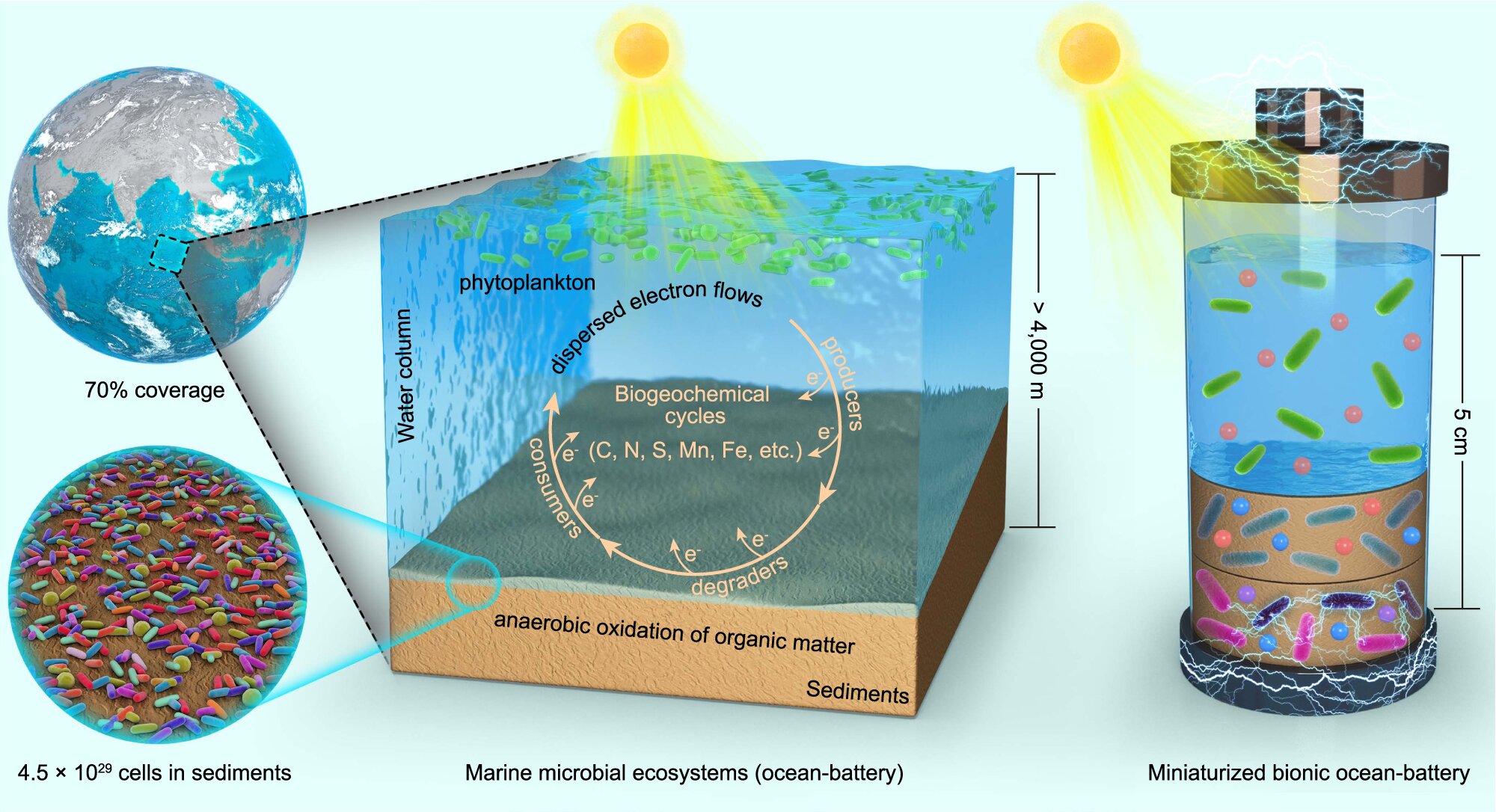Researchers fabricate miniaturized bionic ocean-battery
Date: 30.9.2022
The researchers from the Institute of Microbiology of the Chinese Academy of Sciences have developed a miniaturized bionic ocean-battery, a bio-solar cell that converts light into electricity, by mimicking the basic ecological structure of marine microbial ecosystems.
 Viewed from the outer space, marine microbial ecosystems with photoelectric conversion function can be considered as a huge "ocean-battery" charged by solar energy.
Viewed from the outer space, marine microbial ecosystems with photoelectric conversion function can be considered as a huge "ocean-battery" charged by solar energy.
However, the spatial and temporal distribution of microorganisms in the marine ecosystems is huge, and the electron transfer is sluggish and slow, so the efficiency of photoelectric conversion is low. The researchers proposed that is it possible to develop a spatial-temporally compacted ocean-battery with significantly improved energy efficiency.
To achieve this goal, the researchers extracted the basic structure of marine microbial ecosystems. They designed and constructed a synthetic microbial community consisting of primary producer (cyanobacteria), primary degrader (Escherichia coli) and ultimate consumers (Shewanella oneidensis and Geobacter sulfurreducens) for biophotoelectric conversion.
In this synthetic microbial community, the engineered cyanobacteria are able to synthesize sucrose from carbon dioxide by using light energy and store light energy in sucrose; the engineered E. coli is responsible for degrading sucrose to lactate; S. oneidensis and G. sulfurreducens completely oxidize lactate to carbon dioxide through successive oxidation and transfer electrons to the extracellular electrodes to generate electric current, thereby converting light energy into electricity.
Image source: Zhu et al. (2022), Nature Communications.























